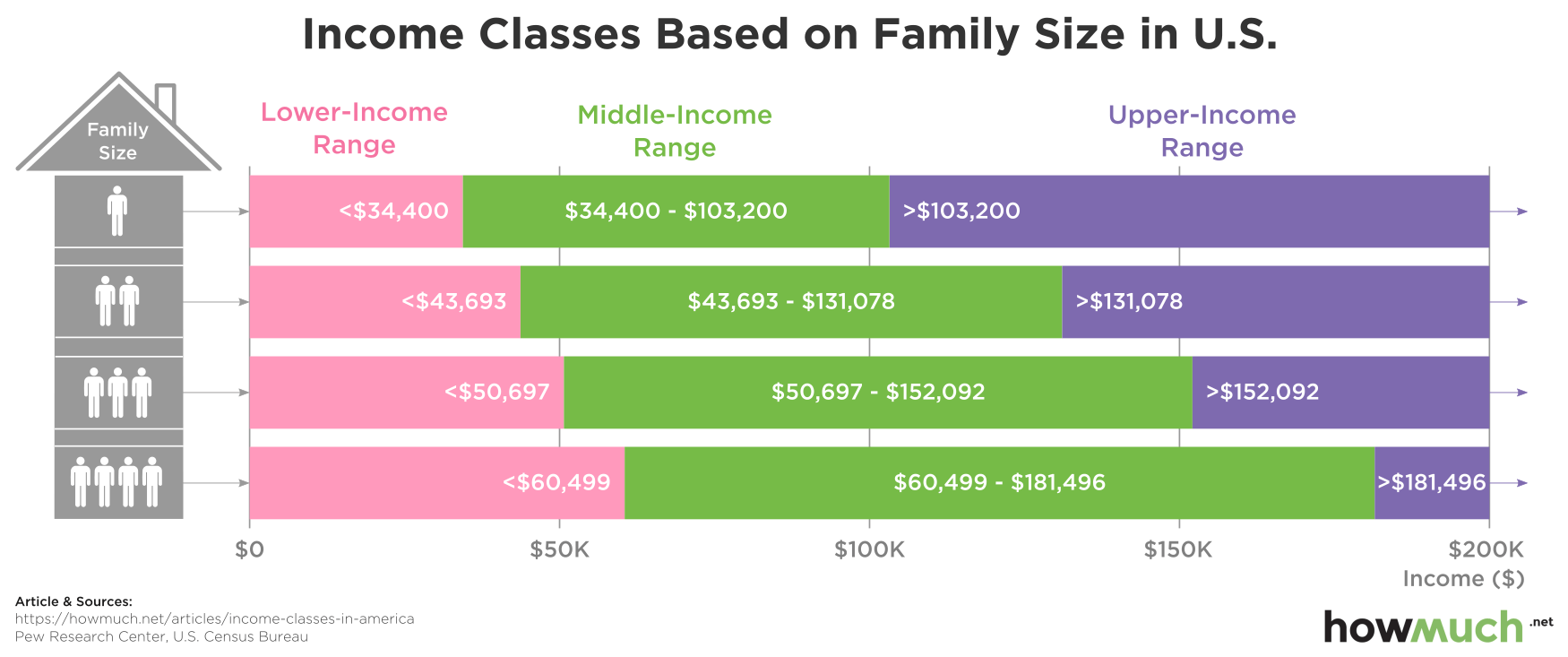
Are you among the many middle-class Americans? A lot of people think they are but according to new research published by the Pew Research Center, a lot of us are actually wrong. It turns out that income alone is not a determinant of status. Household size too needs to be factored in and sadly, most of us don’t do it when we categorize ourselves as middle class. So, how does this work out? Here is a breakdown.
A household of one person needs an annual income from $34,400 to $103,200 in order to be categorized as middle class. Households of one with an average annual income of less than $34,400 are categorized as lower class while those that have an average income of more than $103,200 are categorized as upper class. A household of two, meaning a couple living in the same household, will actually need to make more to rank in the middle class. This household will need an average annual income of between $43,693 and $152,092 to fall into this category. The same household with an average annual income of above $131,078 are ranked as upper class while those with an income of less than $43,693 are ranked as low income.

As the household size gets bigger, the amount needed to make it middle class also becomes larger. For instance, households of three will need between $50,697 ad $152,092 in average annual income to be ranked as middle class. An income of less than $50,697 for such families will put them at the lower income category while those earning more than $152,092 a year are ranked as high income. In households with four people, an average annual income of between $60,499 and $181,496 will be needed to become part of the middle class. These types of households will also need to be making more than $181,496 a year to become part of the upper class. The ones that are making less than $60,499 in average annual income are categorized as lower income.

In this calculation, it simply means that, it’s relatively difficult for bigger households to rank in upper and middle class. Things look to be much simpler for single working adults with no children. In addition to this, the gap between middle class and upper income widens as more people join the household. In other words, the gap between a middle-class household of one and the same upper class household is lower compared to the gap between a middle-class household of three and the same upper class household.
It’s also important to note that there could be many other factors that could determine your standard of living other than where you fall in the income ladder. For example, it’s generally assumed that people in upper and middle-class have a better standard of living compared to those in the lower end. But the cost of living varies significantly by state. Additionally, the cost of living is higher in urban areas than in rural areas.












